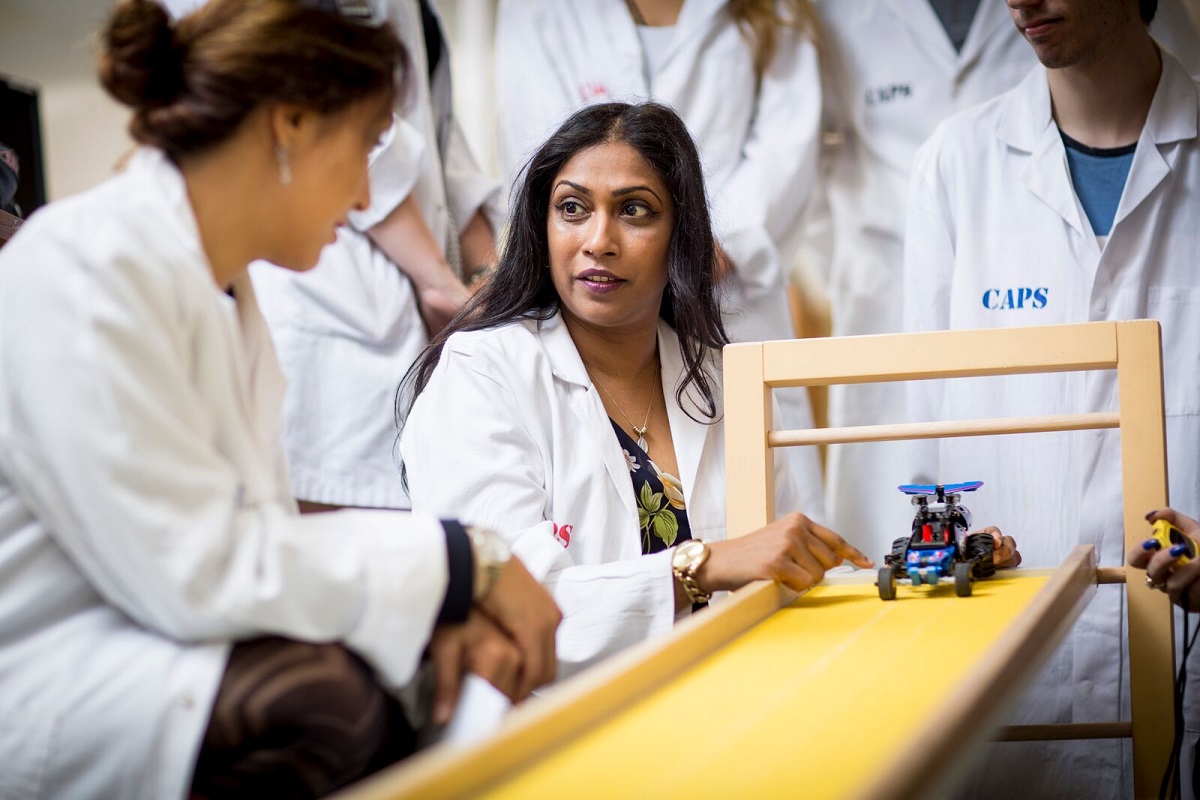
A new teaching approach involving racing cars made of Lego has transformed the way that students at Flinders University are learning the fundamentals of science and has significantly reduced early dropout rates for introductory physics.
The approach, outlined in the American Journal of Physics by Flinders academics, has shown that tailored activities involving Lego race cars not only help students grasp theoretical concepts such as measurement error and variability, but also improve their lab reporting skills, engagement and confidence.
“Many undergraduate students come to our introductory physics course without basic science skills or any prior exposure to physics or mathematics at high school level,” explains lead researcher of the Lego teaching model, Dr Maria Parappilly.
“This can make lab work exceptionally challenging, and is a major factor in the high early drop-out rate we witness for this topic.”
As a consequence, Dr Parappilly and her team were inspired to design a teaching approach that introduced students enrolled in first-year physics to pivotal scientific ideas in a real-world way, and that helped them grasp the very important but abstract concept of uncertainty in physics.
“We devised a series of experiments involving Lego race cars, which students could relate to and which helped them relax and feel more capable of utilising the tools of science.
“Initially students were asked to measure the time taken for a Lego race car to travel a set distance, using different starting points.
“Then we introduced a ramp of variable height, with either a smooth, low-friction surface or a rough, high-friction surface, and invited students to conduct the experiment again.
“Later the students were given cars of different designs that had different wheels, weights and heights, and were asked to repeat their car race.
“Throughout these exercises, students were encouraged to consider the limitations of their equipment, the impact of gravity and outside factors on the experiment results, the sources and magnitude of uncertainty, the role of constants and variables, and the validity of the experiment design and how it could be changed to improve its reliability,” Dr Parappilly says.
“Students were able to grasp fundamental concepts such as the formulae for speed, velocity and acceleration, potential and kinetic energy, and how to calculate track angles,” Dr Parappilly says.
As a result of the Lego teaching model, students reported that they felt less anxious about participating in lab sessions and more prepared to continue with scientific study.
They also reported improved skills in preparing lab reports and objectively evaluating lab results.
“Importantly, all the students who attended our first round of Lego sessions continued on in the topic,” says Dr Parappilly.
“Since then, the student attrition rate for the introductory physics topic at Flinders University has significantly slowed year-on-year.
“The use of Lego race cars sounds simple, but it has afforded our students a unique opportunity to relate a familiar educational toy to the process of scientific enquiry, and observe, record and analyse phenomena in a way that is more meaningful and concrete than ever before,” Dr Parappilly says.
The Lego physics approach pioneered at Flinders University is currently being rolled-out at universities interstate and is also being used by some South Australian high schools.
The full paper on Lego physics is now available online: Parappilly M., Hassam C. and Woodman R. (2018). ‘Race to improve student understanding of uncertainty: Using LEGO® race cars in the physics lab’, American Journal of Physics, vol. 86, no. 1, pp. 68-76.
About Dr Maria Parappilly
Dr Maria Parappilly is an award winning Physics Educator and Research Section Head for STEM Education at Flinders University. Her pioneering teaching innovations have been recognised with state and national awards, and internationally with the only international D2L Innovation Award in Teaching and Learning (Physics, Canada, 2017). Dr Parappilly is the chair of Physics Education of Australian Institute of Physics (AIP). This year she joined the South Australian Women’s Honour Roll for 2017.

